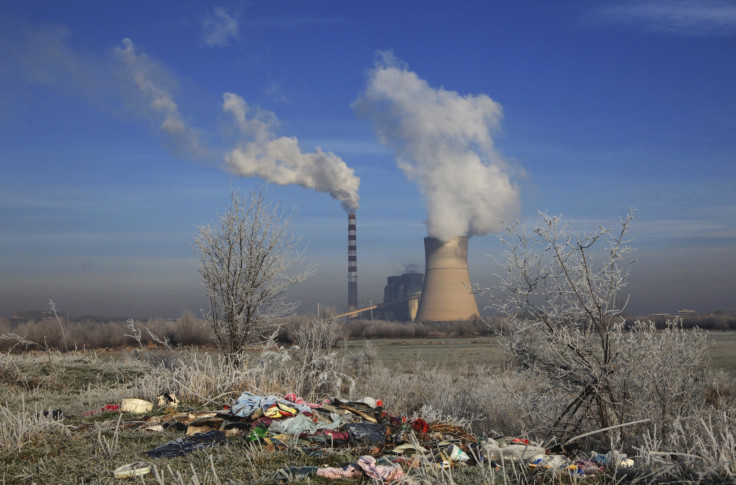Geoengineering: What is it, how does it work and is it good or bad?
Scientists have suggested various geoengineering projects to help limit global warming.

Geoengineering is the deliberate manipulation of the environment that, in theory, could help to stabilise climate change. While reducing greenhouse gas emissions is the most straightforward and low-risk way of limiting global warming, geoengineering is considered a "plan B".
What is geoengineering and what are the different ways of doing it?
The term geoengineering was coined in the 1970s by Italian physicist Cesare Marchetti. In an issue of the journal Climate Change, he proposed a method of disposing of atmospheric CO2 by injecting it into the ocean: "CO2 is disposed of by injection into suitable sinking thermohaline currents that carry and spread it into the deep ocean that has a very large equilibrium capacity," he wrote.
"The Mediterranean undercurrent entering the Atlantic at Gibraltar has been identified as one such current; it would have sufficient capacity to deal with all CO2 produced in Europe even in the year 2100."
Russian climatologist Mikhail Budyko had been mulling the possibility too. He said that if it was theoretically possible to alter the global climate with a "simple and economical method", then it should be something of interest.
Earth's climate fluctuates. It has done since it formed more than 4.6 billion years ago. At present, we are in an interglacial period – that means that while technically we are in an ice age, we are in a warmer part of it. What we commonly consider the "last ice age" ended roughly 11,000 years ago.
Because scientists understand the conditions involved in periods of warming and cooling, it is possible to artificially recreate them. Enter geoengineering.
Since Marchetti's paper, many different methods have been put forward to artificially alter Earth's climate, but they all have the same end goal: to stop the planet heating up at the rate it is at the moment. Largely speaking, all the different geoengineering proposals fall into one of two categories. Here we look more closely at the two plans.
CO2 removal

This does what it says – removing carbon dioxide from the atmosphere.
One way of doing this would be BECCS, or bio-energy with carbon capture and storage. This uses biomass to extract CO2, then somehow capture and store it. This is the only geoengineering project currently being used on an industrial level.
More recently, scientists have found a way to turn CO2 in to rocks – potentially providing a long-term and safe way to store emissions. Researchers showed CO2 from the atmosphere could be injected into volcanic rock and converted into carbonate minerals in under two years.
Another option for removing CO2 is capturing directly from the air through a chemical process. One proposed method is through artificial trees – with huge fake forests that could suck out 1,000 times more CO2 than normal trees. And it could then be removed and stored.
Finally, another proposal involves the ocean – specifically introducing nutrients to the upper ocean to increase marine food production, thereby providing another place for the CO2 to go.
Solar radiation management
This is more complicated. It involves reducing the amount of sunlight absorbed by reflecting it away – thereby limiting global warming. Instead of reducing greenhouse gas concentrations, it relies solely on stopping heat coming in (we call them greenhouse gasses because they get caught in the atmosphere, creating a greenhouse effect – when the sun shines on Earth all the heat gets trapped in).
There are several ways this could be done. One low-risk option would to be introduce paler coloured roofs or growing high-albedo crops. Albedo refers to the amount of solar energy reflected back into space. Highly reflective things do this – ice with snow on top of has a very high albedo. But with global warming resulting in ever lower levels of ice, its ability to reflect sunlight is diminishing. Introducing artificial areas of high albedo could work to counteract these loses.
Making the clouds brighter has also been proposed. This would involve spraying a jet of saltwater into the sky. This would break down into droplets, the liquid from which would quickly evaporate. All that would be left would be the salt particles. When these settle on clouds, making them brighter and therefore better able to reflect sunlight back into space.
Going into space, another suggestion is to create a "space sunshade", which would obstruct solar radiation with mirrors.
But one of the most popular (and potentially risky) proposals for solar radiation management is firing reflective aerosols into the upper-atmosphere, mimicking the global cooling effect of volcanoes. When a volcano erupts, it ejects sulphur dioxide into the atmosphere. In the upper atmosphere, droplets of sulphuric acid form when the gas combines with oxygen. This reflects sunlight away. But this plan comes with a major drawback – the artificial sulphuric acid could strip away the ozone layer, which is obviously worrying.
Is geoengineering good or bad?

At the moment, it's impossible to say. This is because the vast majority of the project proposed haven't been actioned on and we are still hoping vastly reducing greenhouse gas emissions ourselves will limit global warming (at COP21, world leaders set out a plan to keep temperatures below 1.5C what they were before the industrial revolution).
Should it come to using geoengineering as a plan B, it would likely (you would hope) involve a huge amount of research – and risk assessment – before anything was done.
In 2009, the Royal Society published a 100-page report into geoengineering, looking at its potential benefits – and risks. The report reads:
It is likely that global warming will exceed 2°C this century unless global greenhouse gas emissions are cut by at least 50% of 1990 levels by 2050, and by more thereafter. ... Unless future efforts to reduce greenhouse gas emissions are much more successful then they have been so far, additional action may be required should it become necessary to cool the Earth this century. Such action might involve geoengineering.
The safest and most predictable method of moderating climate change is to take early and effective action to reduce emissions of greenhouse gases. No geoengineering method can provide an easy or readily acceptable alternative solution to the problem of climate change. Geoengineering methods could however potentially be useful in future to augment continuing efforts to mitigate climate change by reducing emissions, and so should be subject to more detailed research and analysis.
Geoengineering of the Earth's climate is very likely to be technically possible. However, the technology to do so is barely formed, and there are major uncertainties regarding its effectiveness, costs, and environmental impacts. Methods that act rapidly by reflecting sunlight may prove to be ineffective in offsetting changes in rainfall patterns and storms, but current climate models are not sufficiently accurate to provide a reliable assessment of these at the regional level. Methods that act by removing greenhouse gases from the atmosphere involve fewer uncertainties and risks, but would have a much slower effect on reducing global temperature. These methods could eventually make an important contribution to mitigating climate change.
The acceptability of geoengineering will be determined as much by social, legal and political issues as by scientific and technical factors. There are serious and complex governance issues which need to be resolved if geoengineering is ever to become an acceptable method for moderating climate change.
Concluding, the authors of the report said that even geoengineering advocates are only "reluctant champions" and think of it as an "insurance policy" the event of conventional methods failing i.e. it is very much a "last resort". However, they add that the question then arises over who decides the point at which we need to use this last resort?
"Geoengineering, like other emerging areas of technology, requires flexible frameworks of governance and regulation, which can be adapted in light of fresh evidence and analysis. The legal landscape is both fragmented and uncertain and relevant controls necessarily span domestic, regional and international law. While no single international instrument applies, there are a number of existing treaties and customary rules which could be brought to bear, depending on where the activity and its effects occur. However, many of the questions and uncertainties over geoengineering extend beyond the realm of economic assessments, regulation or risk management, to encompass broader questions about direction, ownership and control."
© Copyright IBTimes 2025. All rights reserved.






















